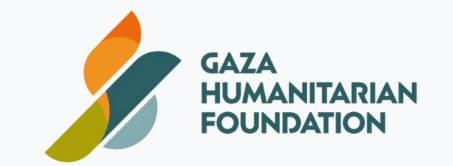Gaza Aid Organization Faces Disinformation Campaign Amidst Humanitarian Crisis
The Gaza Humanitarian Foundation (GHF), an American and Israeli-backed aid organization, finds itself embroiled in a maelstrom of misinformation and accusations as it strives to deliver crucial aid to the besieged Gaza Strip. The organization, which has distributed nearly 50 million meals since commencing operations, has become the target of a concerted disinformation campaign, with accusations ranging from distributing oxycodone-laced flour to causing the deaths of hundreds of Palestinians seeking aid. GHF Executive Director Rev. Johnnie Moore has denounced these claims as fabrications, pointing fingers at Hamas, the militant group controlling Gaza, as the orchestrator of the smear campaign. The situation underscores the complex and often perilous landscape of humanitarian work in conflict zones, where aid organizations can become entangled in political agendas and propaganda wars.
The most serious accusation leveled against GHF revolves around the claim that over 500 Palestinians have been killed while attempting to access food at GHF distribution sites. This claim, initially circulated by Hamas and subsequently amplified by over 170 NGOs and international media outlets, has been presented without verifiable evidence or proper attribution. Reuters, in its reporting, attributed the figure to “medical authorities in Gaza,” failing to disclose that these authorities are under Hamas control. This omission, coupled with a headline that echoed Hamas’ narrative of GHF aid centers as “death traps,” has further fueled the controversy. GHF vehemently denies these accusations, asserting that Hamas itself is responsible for the violence and is actively targeting the aid organization.
GHF’s contention that Hamas is actively targeting the organization is supported by credible reports of Hamas placing bounties on GHF employees, both American contractors and Palestinian locals. These bounties, coupled with Hamas’ earlier threats to target anyone collaborating with GHF, paint a grim picture of the dangers faced by aid workers in Gaza. Tragically, 12 Palestinian GHF employees have already been executed, allegedly by Hamas operatives. Furthermore, GHF has reported that Hamas prevented medical staff from treating injured GHF workers at Nasser Hospital after an alleged attack by the militant group. These chilling accounts underscore the hostile environment in which GHF operates and the lengths to which Hamas appears willing to go to disrupt the flow of aid.
The international media’s response to GHF’s allegations against Hamas has been largely muted. While The Telegraph published an article detailing the reported bounties, most major outlets have remained silent on the issue, focusing instead on the unverified claims of deaths at GHF distribution sites. This selective reporting raises concerns about the media’s susceptibility to Hamas propaganda and its potential to unwittingly contribute to the escalating tension surrounding humanitarian aid in Gaza. The lack of attention given to Hamas’ alleged targeting of aid workers also highlights the precarious position of humanitarian organizations in conflict zones, where they often face threats from all sides while struggling to provide vital assistance to vulnerable populations.
The disinformation campaign against GHF mirrors previous instances of Hamas using propaganda to discredit aid organizations and undermine their operations in Gaza. In 2009, Hamas falsely accused Israeli intelligence of distributing aphrodisiac chewing gum to corrupt Gazan youth. These past incidents, coupled with the current wave of accusations, reveal a pattern of Hamas attempting to control the narrative and maintain its grip on the distribution of aid, a crucial source of power and influence in the impoverished territory. By painting GHF as a dangerous and unreliable organization, Hamas aims to discredit its efforts and dissuade the population from seeking aid through channels outside of its control.
The ongoing controversy surrounding GHF underscores the challenges of delivering humanitarian aid in conflict zones, particularly when operating in territories controlled by militant groups. The disinformation campaign against GHF, coupled with the alleged targeting of its employees and the obstruction of medical treatment for its injured staff, highlights the precarious position of aid workers and the need for increased international pressure to ensure their safety and the unimpeded delivery of aid. The international community must hold Hamas accountable for its actions and ensure that humanitarian organizations can operate freely and safely to provide life-saving assistance to the people of Gaza. The situation also calls for greater media scrutiny and responsible reporting to avoid amplifying misinformation and contributing to the already volatile situation.


